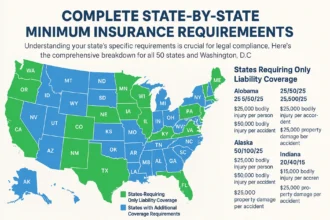Detecting roof leaks at the first signs of trouble is critical to avoid extensive repairs down the road. While occasional minor leaks are unavoidable, catching them early and understanding their root causes allows for quick remediation. Neglecting roof leaks inevitably leads to exponential damage to roof sheathing, framing, insulation, interiors, and possessions. Being proactive in monitoring for issues and addressing them promptly is key to minimizing costs and preventing lasting harm to your home.
Where Do Roof Leaks Come From?

To know what to look for, it helps to understand the most common sources of roof leaks:
Damaged Shingles or Tiles
Storms with heavy winds or large hail can crack, tear off, or loosen roofing materials. Missing or dislodged sections become points for water intrusion.
Flashing Failures
Leak-prone areas around chimneys, vents and valleys rely on proper flashing installation. Gaps, tears or loose flashing allows water in.
Clogged Gutters
When gutters fill with debris, water backs up and pools on the roof instead of draining off. This accelerates deterioration of roofing.
Poor Attic Ventilation
Lack of adequate airflow causes moisture buildup in the attic. Condensation drips through joints and soaks insulation and sheathing.
Ice Dams
In cold climates, melted snow refreezes at the eaves, causing an ice dam that forces water up and under shingles.
Age and Wear
Time, sun exposure, weathering and foot traffic take a toll on all roofing over the years. Seams split, materials degrade and fasteners work loose.
Signs of Roof Leaks
Be alert for any of these common indicators that your roof may be leaking:
- Dark stains on interior ceilings and walls
- Bubbling or peeling paint and drywall
- Musty odor indicating excess moisture
- Visible mold or mildew growth
- Cracks in ceilings or walls
- Puddles on the floor during or after rain
- Water dripping from electrical fixtures
- Sagging roof decking visible in the attic
- Spongy, damp or rotting roof sheathing
- Missing, cracked, curled or loose shingles
- Granule loss exposing asphalt on shingles
- Rust streaks underneath roof fasteners
- Gutters pulling away from the home
Don’t ignore these red flags or assume minor leaks will go away on their own. Address all evidence of roof problems promptly before major damage can occur.
Locating the Exact Source of Roof Leaks
Once you confirm a leak exists, systematic troubleshooting helps pinpoint the origin:
Start in the Attic
Inspect the attic after rainfall for wet insulation, moisture on rafters, and stains on the underside of roof sheathing. This gives clues to leak locations.
Check Interior Finishes
Note where dripping occurs or water damage appears inside. Track stains to find where water infiltrates the home. Remove wet sections of drywall or paneling if needed.
Correlate Exterior Damage
Go up on the roof and scan for damage in those areas corresponding to interior leaks. Look for missing or loose shingles, damaged flashing, and any openings.
Isolate Sections
During dry weather, have a helper spray sections of the roof with a hose while you observe inside for water entry points. Move systematically around suspected areas.
Remove Shingles
If required, carefully take up shingles in problem zones to inspect the underlayment and sheathing underneath. Repair or replace components as needed.
Preventing Roof Leaks
Along with fixing existing leaks, be proactive in maintenance and repairs to avoid future issues:
- Inspect your roof annually before rainy seasons and after severe storms
- Clear debris from gutters and downspouts regularly
- Reseal flashings, especially in leak-prone valleys and projections
- Replace missing shingles/tiles and secure any loose ones
- Prune overhanging tree branches that can damage roofing
- Install leaf guards to keep gutters from getting clogged
- Improve attic ventilation to minimize moisture buildup
- Remove snow carefully using a roof rake to avoid roofing damage
- Clean algae, lichen and moss growth before extensive buildup
READ ALSO: Does Your Roof Need Replacing or Just Minor Repair?
When To Call a Roofer
While many leaks can be temporarily patched by handy homeowners, repairs to flashing, extensive shingle replacement, and ventilation improvements often require roofer skills. Also contact a professional immediately if:
- Leaks originate from indeterminate sources or persist despite repairs.
- You find sagging roof sheathing, rafters or trusses.
- Large sections of roofing are severely damaged, worn or missing.
- Significant moisture has penetrated walls, attics and ceilings.
- Gutters are completely clogged or pulling away from the home.
To Recap
Left unchecked, small roof leaks inevitably spiral into expensive repair bills and enduring harm to a home’s structure and interiors. But catching problems early provides the chance to fix them economically and protect your valuable investment for the long run. Stay vigilant in monitoring for any evidence of roof leaks and never delay necessary repairs or maintenance. Protect your home and avoid costly headaches by acting promptly when issues first arise.
FAQs About Identifying Roof Leaks
What are signs of roof leaks inside a house?
Interior red flags include water stains on walls and ceilings, peeling paint or drywall, musty odor, visible mold growth, cracked finishes, and dripping from light fixtures.
How can I tell where a roof is leaking?
Track ceiling stains to their highest point. Check the attic below those spots for wet insulation. Correlate to exterior roof damage above. Isolate sections with a hose test if unsure.
Do all roof leaks show up on the ceiling?
Not necessarily – leaks can soak into walls and remain hidden if there’s no ceiling below. Check for dampness, stains and peeling paint on upper interior walls as well.
What causes recurring roof leaks?
Persistent leaks usually mean an underlying issue wasn’t properly fixed, like flashing defects or ventilation problems. They require more extensive repairs to fully resolve. Call a roofer.
How much does it cost to fix a roof leak?
Minor leaks can often be patched for $200-$500 but more complex repairs like replacing flashing average $800-$1,500. Extensive work replacing roof planks or sections could run $5,000 or more.
When should I replace my whole roof?
Consider full roof replacement if it’s over 20 years old, you have chronic leaks in multiple areas, or see sagging structure/extensive damage. Also replace after major storms, hail or wind events.
Can I patch a roof leak myself?
Temporary patches are OK but ensure proper repairs are made soon to avoid bigger issues. Tasks like reflashing and replacing shingles/tiles often require professional skills.
In another related article, 7 Roof Leak Early Warning Signs Every Homeowner Should Know





